calsfoundation@cals.org
Edward Everett Burr (1895–1986)
Best known for designing the Arkansas Centennial half-dollar, Edward Everett Burr was a commercial artist, sculptor, and art professor. Raised in Paragould (Greene County), he spent most of his career in Chicago, Illinois.
Everett Burr was born on January 18, 1895, in Warren County, Ohio, to George and Virginia Burr; he had two siblings. Burr’s father practiced law in Ohio but moved to Paragould in 1905. In 1915, two days after Burr’s twentieth birthday, his mother died. His 1917 draft card shows him living in a boarding house in Detroit, Michigan. His trade was motor building, but he was unemployed. In 1923, his father became a Methodist minister, serving a number of communities in northern and western Arkansas.
Burr enrolled at the Art Institute of Chicago, where he studied in the 1920s with Leopold Seyffert, a society portraitist, and Albin Polasek, an academic sculptor. By 1926, Burr’s work was being exhibited at the Art Institute of Chicago and, in 1927, at the Illinois Academy of Fine Arts. In 1930, after the Depression hit, Burr—thirty-five, single, and working in advertising graphics for a printing firm—was living in Chicago with a motley group of lodgers. In 1931, he participated in a show sponsored by the Renaissance Society. Two works, a self-portrait and Plenty, were shown at the Century of Progress Exhibition in 1933, and he received a prize from the Art Institute of Chicago that same year.
Meanwhile, the Arkansas Centennial Commission was planning a gala celebration of Arkansas statehood and wanted to sell a commemorative coin to fund it. Burr won the contest to design the coin, but the federal Commission on Fine Arts rejected his proposals in July 1934. After much negotiation, approval finally came in March 1935. The reverse of the design was later used for a half-dollar honoring Senator Joseph T. Robinson.
In 1938 and 1941, Burr showed his work at the Society for Sanity in Art, a group that protested against abstraction. He still produced architectural renderings and advertising art, such as automobile advertisements, but also taught at the University of Illinois’s Navy Pier Campus, which opened in Chicago in 1946. Graduates of this two-year school proceeded to University of Illinois at Urbana-Champaign, where Burr also taught. He taught some classes at Northwestern University as well.
In 1946, Burr married Margaret Love Stewart of Memphis, Tennessee. She helped him publish Show-Card Making Simplified (1951). Teaching occupied most of Burr’s time, but his Portrait of Robert P. Hackett appeared at the Chicago Artists’ Exhibition in 1958. Burr retired from teaching in 1963.
In commercial work, Burr excelled as an illustrator, with some pieces reminiscent of Maxfield Parrish and Norman Rockwell. Later, his art became looser and more expressionistic. Though still representational, the painting style and use of color was influenced by Regionalism.
The Burrs moved to Memphis to care for Margaret’s mother. Burr continued occasionally to design coins and medals, such as a Will Rogers commemorative for the Franklin Mint (1967) and the Memphis Sesquicentennial medallion for the U.S. Mint (1969). He also taught, on a volunteer basis, at a seniors’ center in Memphis, until past the age of ninety. Burr died in August 1986, and his wife died in 1988. Their bodies were donated to science.
One of Burr’s paintings is held by the Jule Collins Smith Museum of Fine Art at Auburn University in Alabama. It depicts an elderly homeless man in a shabby overcoat, with his hat down and his back to the viewer, scavenging for food in a trash can. The painting was featured in an exhibit called Picturing an Era: Art from the Great Depression to the Second World War. Elaborate figural radiator caps that Burr designed in the late 1920s for Cadillac and LaSalle can be seen at the Gilmore Car Museum of Hickory Corners, Michigan.
For additional information:
Alfred Hamlin Burr Papers. Nebraska State Historical Society, Lincoln, Nebraska.
“Award-Winning Design Is by Veteran Winner.” Memphis Press-Scimitar, September 16, 1968.
Burr, Edward Everett. Show-Card Making Simplified. Edited by William Koelling. Chicago: American Technical Society, 1951.
Edward Everett Burr Papers. Special Collections. University of Arkansas Libraries, Fayetteville, Arkansas.
Falk, Peter Hastings, ed. Who Was Who in American Art. Madison, CT: Sound View Press, 1985.
“Retired Art Professor Wins with Design of Coin-Medal.” Memphis Commercial-Appeal, August 16, 1967.
Swiatek, Anthony, and Walter Breen. The Encyclopedia of United States Silver and Gold Commemorative Coins, 1892–1954. New York: FCI Press, Inc./Arco Publishing, 1981.
Jeffrey Owens
Tyler Junior College
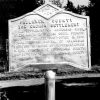 Centennial Celebration
Centennial Celebration Early Twentieth Century, 1901 through 1940
Early Twentieth Century, 1901 through 1940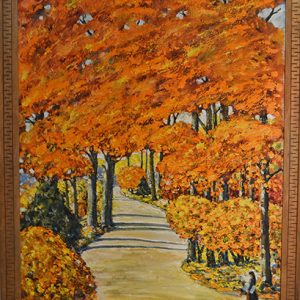 Autumn Trees
Autumn Trees 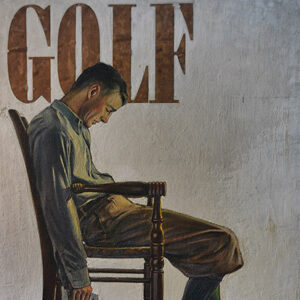 Burr Illustration
Burr Illustration 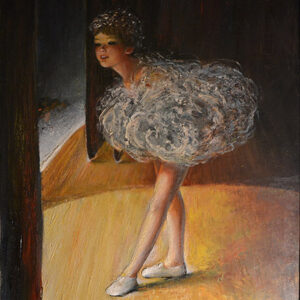 Ballet Painting
Ballet Painting 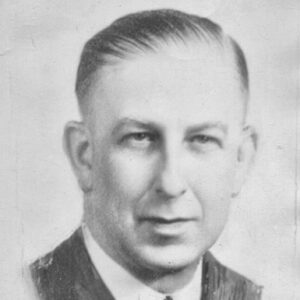 Everett Burr
Everett Burr  George Burr
George Burr 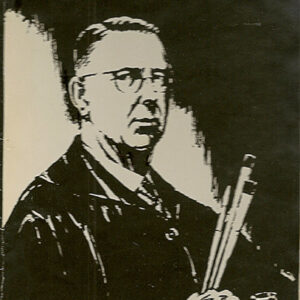 Everett Burr Self-Portrait
Everett Burr Self-Portrait 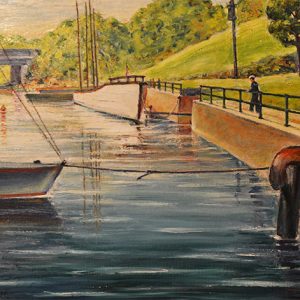 Canal
Canal 




I believe I might have a piece of his artwork. I think it might be, anyway. It’s like a 3-D floral plastered wall art.